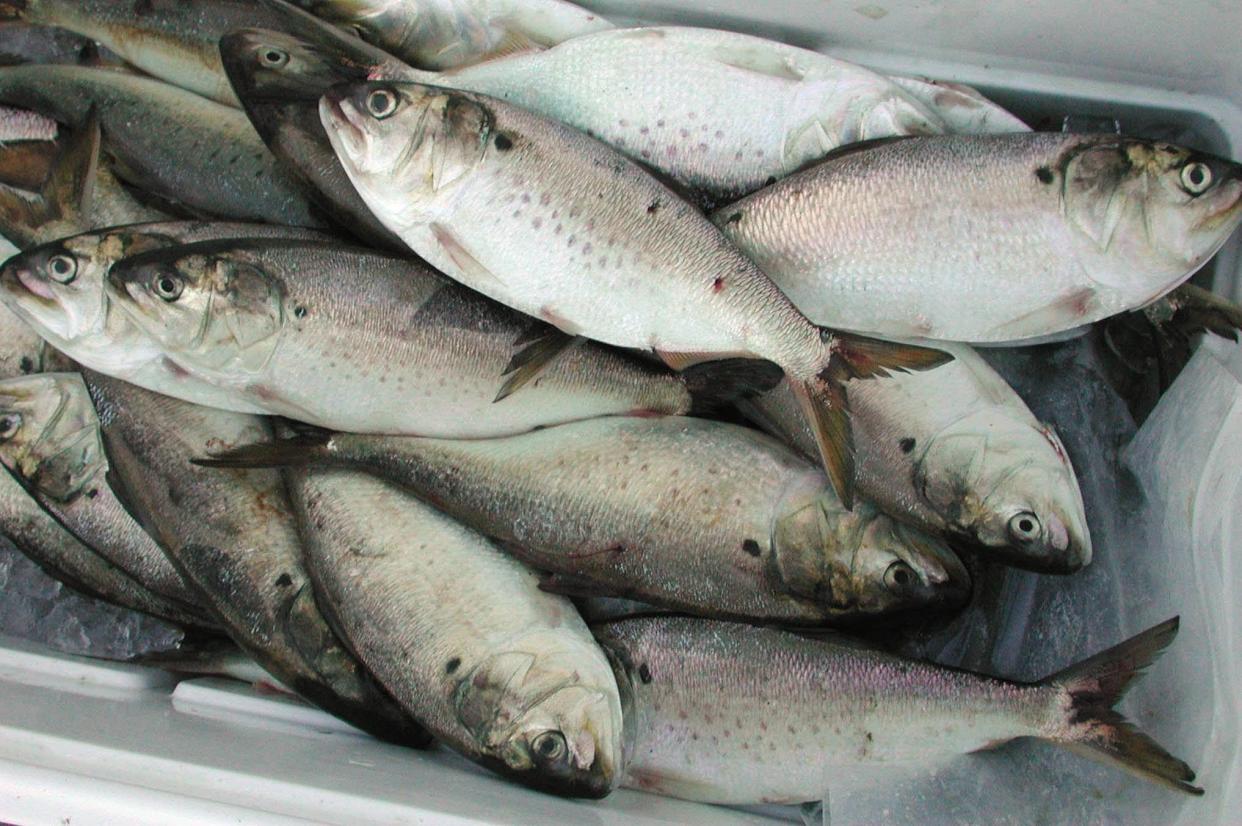Menhaden madness: When thousands of them washed up near Cape Henlopen
“A singular occurrence excited the people of Lewes,” the Smyrna Times reported on Nov. 18, 1874, “and caused them to leave their cottages by the sea and even their churches and go into the fishing business.” On the beach near Cape Henlopen, an enormous school of fish appeared between 10 and 11 o’clock in the morning. The fish were packed together so tightly that they were unable to swim, and the breakers tossed them high and dry on the sand.
Several hundred men, women and children rushed to watch in amazement as thousands of silvery fish were deposited on the beach. As news of the unusual event spread, Lewes residents brought nets, baskets, rakes and tools to gather several thousand bushels of fish that were hauled away in carts and wagons to be cleaned and salted to be used in the future. Despite these efforts, thousands more remained on the beach to spoil.
Bikefest announces first 2024 live act: Ocean City's Bikefest announces first big live music act. Here's who's performing for free.
Menhaden are abundant now, and back in time of Capt. John Smith

The Atlantic Menhaden, also known as mossbunker, pogy and other names, is a foot-long fish once abundant in the coastal waters of the eastern United States. Native Americans used menhaden to fertilize crops.
When Capt. John Smith, of Pocahontas fame, explored the Chesapeake Bay in 1608, he noted that in several places, he encountered schools of fish so abundant that they surrounded his boat. Smith later wrote, “Our barge driving amongst them, we attempted to catch them with a frying pan; but we found it a bad instrument to catch fish with.” Smith also noted that they found some of these fish “dead upon the shore.”
European settlers used the oily menhaden to produce fuel for lamps. As improved methods to corral large schools of menhaden and extract the oil from them developed, the menhaden fishing industry expanded.
Narcan boxes coming to Ocean City: Ocean City installing Narcan boxes around town as overdose deaths increasing
Menhaden spawned their own industry in Lewes

In 1883, the Luce Brothers and S.S. Brown & Co. built the first menhaden processing plant at Cape Henlopen. Conveniently located near the Atlantic habitat of the menhaden, the Lewes fish plants became one of the country’s most productive locations for the menhaden industry.
In the middle of the 20th century, 300 million tons of menhaden were landed annually at the fish plants at Lewes, but a rapid decline in the menhaden population led to the closure of the fish plants on Cape Henlopen in the 1960s.
The menhaden, however, is not the only fish common to Delaware waters. Bluefish, twice the size of menhaden, also traveled in schools in mid-Atlantic waters.
Latest business news: Washington Inn gets new owners, new hotel coming to Fruitland | What's Going There
Bluefish are predators that even done on their fellow fish
Unlike the menhaden, which feed on microscopic plants in the water, bluefish are predators. Bluefish have razor-sharp teeth that allow them to prey on squid and other fish, including menhaden.
When they encounter a school of menhaden, bluefish go into a feeding frenzy known as the “bluefish blitz.” As they attack, the bluefish churn the water and bite whatever happens by. If the feeding frenzy happens near shore, ocean bathers who dared to enter the roiling waters have been bitten.
When the vast school of menhaden was driven on the beach in 1874, they were being pursued by a hungry school of bluefish. The Smyrna Times reported that a correspondent from the Wilmington newspaper, Every Evening, wrote about the incident, “So thick were [the menhaden] that wagons were driven into the water and loaded and then driven off. Thousands upon thousands of bushels were thus captured, and those not used upon the table were immediately salted down or sold to the farmers at 15 cents a bushel for fertilizing purposes. The school remained in the bay until Monday night, when the fish that not captured by the people, or killed by the blue fish, left."
Vote for Salisbury's art prize: Four finalists in running for Salisbury Prize, $10,000, and you can pick your favorite now
Principal sources
Smyrna Times, November 18, 1874.
Delaware Public Archives Marker, “ Menhaden Fishing Industry,”https://archives.delaware.gov/delaware-historical-markers/menhaden-fishing-industry/
NOAA Fisheries,” Bluefish,” https://www.fisheries.noaa.gov/species/bluefish
Captain John Smith, The Generall Historie of Virginia, New England and The SummerIsles, Glasgow: James MacLehose and Sons, 1907, pp. 121-122.
James C. Ippolito, “Quarantine Station,” Tracey L. Bryant and Jonathan R. Pennock eds.The Delaware Estuary: Rediscovering a Forgotten Resource, Newark:University of Delaware Sea Grant Program, 1992, pp.77-79, 90,
This article originally appeared on Salisbury Daily Times: Thousands of menhaden washing ashore created singular Del. sight
